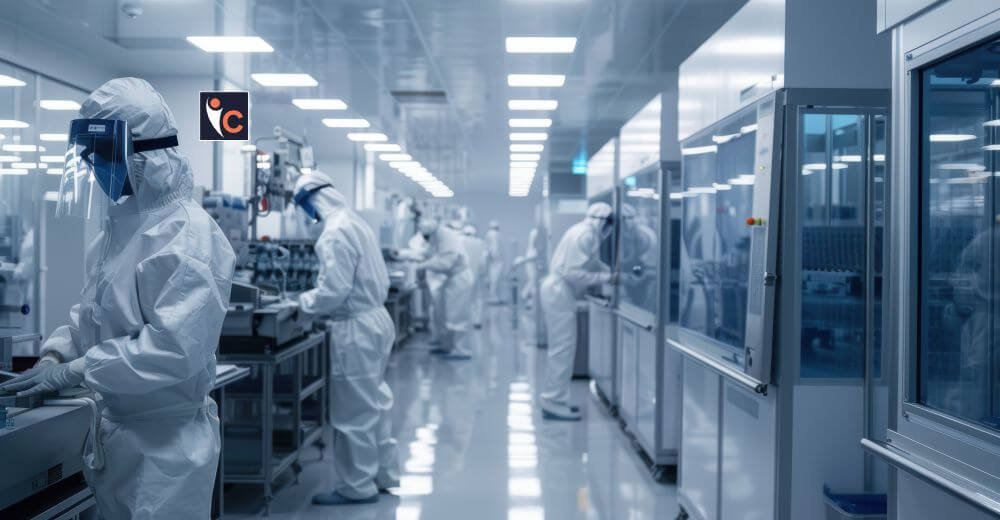Cleanrooms are special rooms where every detail must be even cleaner. Scientists and workers need cleanrooms to perform very critical work, like manufacturing medicine, assembling electronics, or even assembling space modules. Cleanrooms leave no room for dust, bacteria, or any infinitesimal particle that can impact work. Over time, cleanroom technology has been intelligent and green, thus more environmentally friendly. These are “smart and sustainable solutions.”
What is a Cleanroom?
The basic structure of a cleanroom consists of air filtration linked to dust and microscopic particles removal systems to maintain particle-free conditions. A specific temperature zone functions alongside humidity controls. A clean laboratory serves only essential functions in its sanitized environment. Cleanrooms serve various purposes throughout hospitals and factories manufacturing chips and also operate on space stations.
Why is Sustainability Important?
Sustainability is important in cleanroom technology since cleanrooms use a lot of energy in order to cleanse the air and keep the room at the correct temperature. Nevertheless, now researchers and engineers have found new methods of making cleanrooms eco-friendly.
Smart Technology Maximizes Cleanrooms’ Efficiency
Smart technology maximizes the efficiency of cleanrooms. This means that the cleanroom can function with minimal energy consumption or utilization of resources. Energy-efficient HVAC and lighting systems are some of the ways smart solutions are being used.
- Energy-Efficient HVAC and Lighting Systems: The HVAC system is one of the largest energy consumers within cleanrooms. It controls air and temperature in the cleanroom. The newest intelligent systems are even capable of governing themselves to provide a warm and snug room with very little use of power. Even low-consumption LEDs, which have less power intake than conventional bulbs, are being used to save power.
- Air Filtration Systems: The air in cleanrooms must be as clean as possible. There are filters that trap dust, bacteria, and other tiny particles that would be undesirable. Most cleanrooms now are using high-efficiency particulate air (HEPA) filters that filter better and are kinder to the environment. HEPA filters don’t have to be replaced as frequently, so less waste is produced.
- Sensor Technology: Contemporary sensors are fitted within cleanrooms these days to sense temperature, humidity, and the quality of the air. Sensors can be trained to alter the room systems themselves if there’s an issue or conditions have been changed. In case the temperature has been either too high or too low, for example, the system automatically adjusts. It is energy saving since the systems don’t function if not necessary but continuously if needed.
- Water Conservation: Cleanrooms will use water to keep air clean or to make the room cool down. But now, there are more efficient systems where water is recycled and thus water is conserved efficiently. This saves water, which is a natural resource. Some cleanrooms also collect rainwater so that it can be used for cleaning, which is another excellent way of conserving water.
- Renewable Energy Sources: The use of renewable power plants including solar and wind systems represents an intelligent solution to supply cleanrooms with power. The energy sources utilize infinite natural resources to function. Through installation of solar panels and wind turbines the cleanroom decreases its energy consumption from unstable power sources which generates less environmental impact.
How Sustainable Solutions Help the Environment
Green and smart solutions in cleanroom technology are eco-friendly in many ways:
- Less Energy Waste: Cleanrooms use less power with energy-saving technologies, so fewer fossil fuels such as oil and coal must be burned. That is cleaner air and less global warming.
- Less Waste: Cleanrooms generate less waste because they have longer filters and recycle water. Less waste creates less trash that must be thrown away, and fewer resources wasted in making new products.
- Conservation of Natural Resources: Cleanrooms save water and use renewable resources, thus saving natural resources. Solar energy, wind power, and water recycling are ways to make sure that we do not waste precious resources in the future.
The Future of Cleanroom Technology
As technology becomes more intelligent and smarter, cleanrooms will be even greener. Cleanrooms are continuously being hunted for newer ways to minimize energy, water consumption, and pollution intake. All due to such genial concepts, cleanrooms can carry out their priceless jobs while saving the world too.
In the future that lies before us, we have the promise of even cleaner cleanrooms with equipment such as air cleaners that operate on solar power, humidity- and temperature-control devices which are automated, and cleaning robots without using any toxic chemicals. Such equipment will further enhance cleanrooms so they become safer for human beings and nature.
Conclusion
Cleanroom technology is a vital aspect of cleanrooms in many industries, but it doesn’t have to be at the expense of the planet. Intelligent solutions and eco-friendly methods are making cleanrooms greener, more efficient, and effectively still operational. From greening up with energy-efficient systems to water recycling, these creative methods conserve the planet and maintain cleanrooms operational just as effectively. The future of cleanroom technology is bright—and green!
Read More – Click Here





